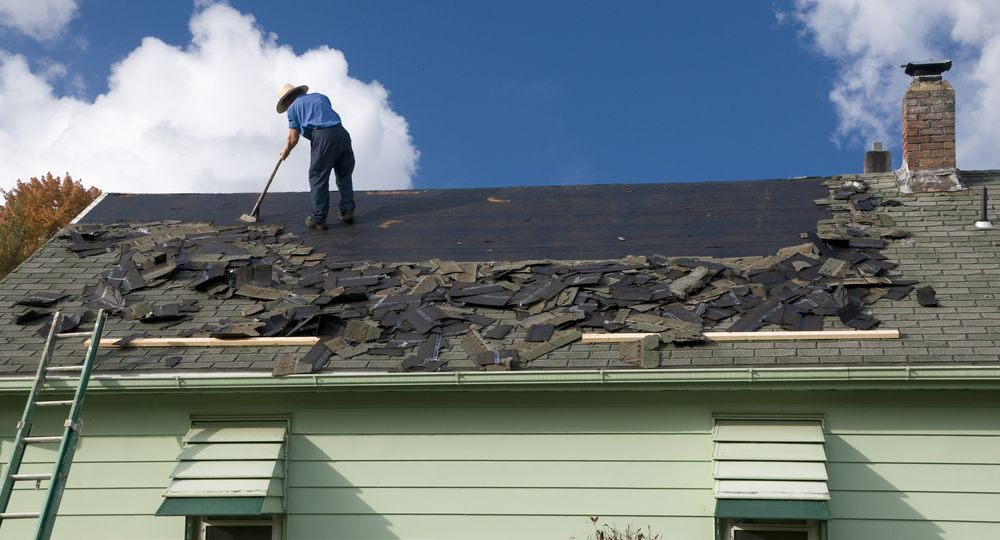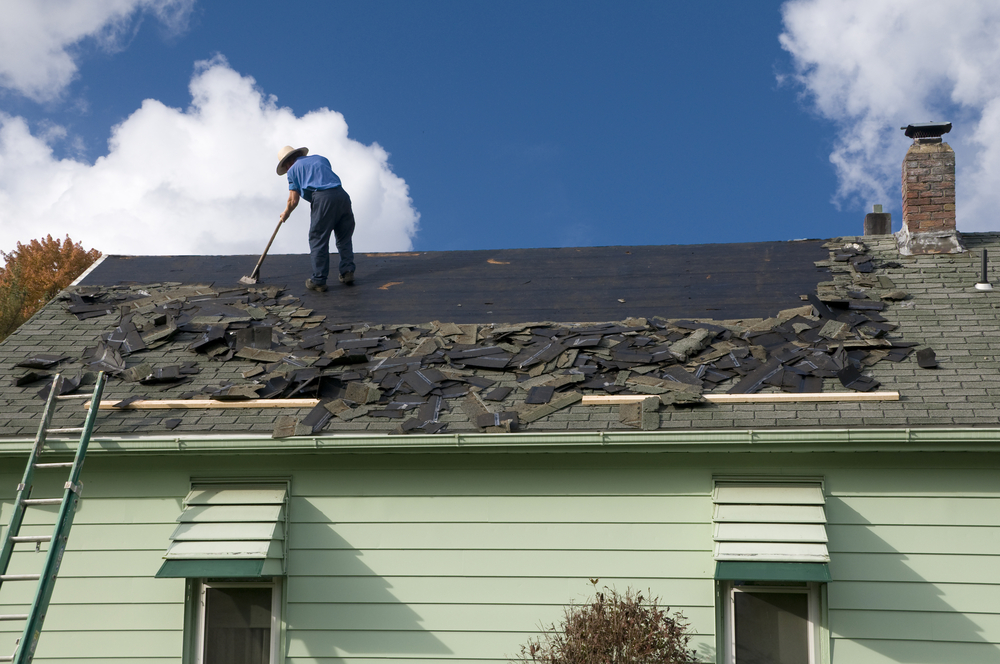

As homeowners, understanding the signs that indicate a need for a new roof is crucial for ensuring the safety and longevity of our most valuable investment. From assessing the age of the roof to recognizing visible wear and tear, the decision to replace a roof requires careful consideration. Let’s explore the essential factors and indicators highlighting the need for a new roof, empowering homeowners with the knowledge to make informed and proactive decisions regarding their roofing needs.
Signs You Need A New Roof
From leaks and missing shingles to structural irregularities, understanding these indicators empowers homeowners to address issues proactively and preserve the integrity of their roofs.
Leaks and Water Damage
Leakages and water stains on the ceiling are telltale signs of roof damage, often indicating compromised shingles or flashing. It’s crucial to address these issues promptly to prevent further interior damage.
Missing, Cracked, or Curling Shingles
Have a roofing professional inspect the roof for any missing, cracked, or curling shingles, as they can leave your home vulnerable to water infiltration and subsequent structural damage. Damaged shingles compromise the roof’s ability to protect your home effectively.
Excessive Granule Loss in Gutters
Examine the gutters for a buildup of granules shed by the shingles, as excessive granule loss signifies the aging or deterioration of the roofing material. Such deterioration compromises the roof’s protective function and warrants attention.
Mold or Moss Growth
Mold or moss growth on the roof surface can signify excess moisture retention or poor drainage. Addressing these issues is essential to prevent further damage and maintain the integrity of the roof.
Roof Is Getting Old
If your roof is approaching the end of its expected lifespan, it’s essential to regularly inspect and maintain it to prevent sudden and costly damage. It may also be necessary to consider a full roof replacement in the near future. The average lifespan of an asphalt roof is around 20-25 years.
Sagging Roof Deck
A sagging roof deck may indicate severe structural damage, often caused by water infiltration or rotting wood. This requires immediate professional attention to prevent potential collapses and ensure the safety of your home.
Environmental Considerations
Homeowners in the Seattle region face distinctive environmental challenges that can impact the health and longevity of their roofs. The prevalent heavy rainfall not only tests the structural resilience of roofs but also contributes to moss growth, which, if left unchecked, can compromise the roof’s integrity. Additionally, the potential for wind damage underscores the need for robust roofing solutions tailored to withstand the region’s climate demands. Understanding and addressing these environmental factors are essential components of effective roof maintenance in the Seattle area.
Assessing Roof Age
Evaluating the age of a roof is crucial in determining its condition and the need for potential replacement. Different roofing materials exhibit varying lifespans, with asphalt shingles lasting around 17-25 years. Considering the age of the roof is paramount, as it allows homeowners to anticipate and plan for necessary maintenance or replacement, ensuring the continued protection and structural integrity of their homes.
Professional Inspection and Consultation
Seeking professional roofing consultation offers invaluable insights into the current state of a roof and the most effective maintenance or replacement strategies. Collaborating with a reputable local roofing company, like A Better Roofing Company, provides homeowners with access to specialized expertise tailored to the unique environmental and structural considerations of the Seattle region. This partnership not only ensures thorough assessments but also facilitates the implementation of optimal solutions, ultimately safeguarding the longevity and performance of the roof.
Conclusion
Recognizing the signs that indicate the need for a new roof is a critical aspect of homeownership, ensuring the structural integrity and safety of one’s dwelling. From evaluating the age of the roof to identifying visible damage such as curling shingles, water stains, or granule loss, it’s evident that proactive assessment and timely action are essential for preserving the longevity of a roof. By leveraging these insights, homeowners can make informed decisions about the maintenance and potential replacement of their roofs, thus safeguarding their homes for years to come.

